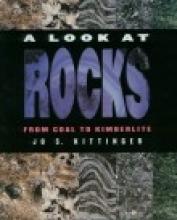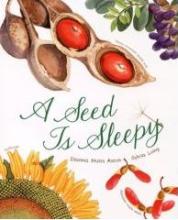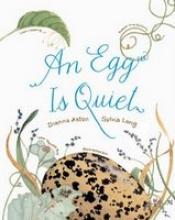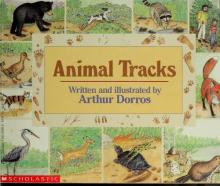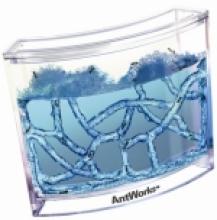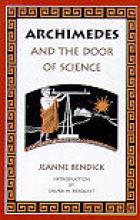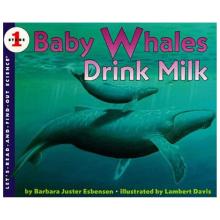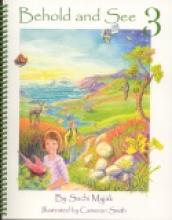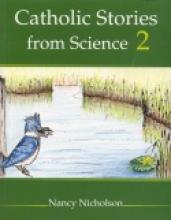Science Elementary
A Look at Rocks
I really didn't expect to get much out of a children's picture book on rocks. Rocks are, well, rocks! I was wrong. Mrs. Kittinger has done a fine job in presenting various types of rock, how they are formed in nature (with a significant emphasis on volcanoes) and the various fascinating and often beautiful varieties of rocks. There are many stunning photos and fascinating statistics on rock-related items from Mount Rushmore (and it's lesser known "sister-sculpture" - Stone Mountain - of some "monumental" figures of the Confederacy) to the Grand Canyon to amazing volcano formations. The book also includes a glossary, an index, suggestions for further reading and internet resources for rock collectors.
A Seed is Sleepy
An Egg is Quiet
Animal Tracks
One of the things that fascinates me most about Wisconsin winters (I grew up in California) are the animal tracks clearly visible in the snow. It leaves a temporary record of what was visiting while you weren't looking – what a fascinating thing for homeschoolers to look into. Animal Tracks will make a nice resource for younger students to study local wildlife. This is an illustrated narrative of animal life with a little guessing game on each page based on the tracks left by each animal. The book also contains four pages of identified tracks (including humans) and instructions for "preserving" the tracks with plaster of paris or by tracing. An excellent way to spark children's interest in nature.
AntWorks Ant Habitat
AntWorks was one of the highlights of our summer natural history studies! This simple kit became a quirky centerpiece on our dinner table, engaging the entire family from the 18-month-old who insists that they are "Nants" to a 40-something daddy. AntWorks comes as a thick-walled plastic home with a stable base; this became important as the little ones spent time watching the ants. We have tried the sand-filled ant farms with dismal spills that freed too many of the inhabitants. The AntWorks home is filled with a blue gel-like substance that provides both nourishment and liquid to the ants. Accompanying literature explains that this gel was developed by NASA for experiments carried out on the Space Shuttle. One of the nicest features is that this gel is translucent, allowing observers to see completely through the tunnels. An optional illuminator is a nice addition which makes an interesting night light, but we thought that it wasn't necessary.
Ants are not included with the kit. You can either catch your own or mail in the enclosed coupon. We opted for the mail-order ants, and that boosted interest in the project for our little ones who love to receive mail. Once the ants are added to their home, the only maintenance that is needed is opening the top for a few seconds a week to allow fresh air to enter. Occasionally you will need to remove a dead ant, but our industrious insects buried their fallen comrades deep in the gel in sealed chambers. It was incredible to observe! This kit, combined with a few books from the library and a couple of diagrams and coloring pages downloaded from the Internet, provided a wonderful investigation into the life of ants for our elementary school-aged students.
Science Kit, Dimensions: 6.5"L x 5.5"W x 1.25"D
Archimedes and the Door of Science
Homeschoolers will appreciate Laura Berquist's helpful hints (in the introduction) for incorporating this book into your own curriculum. Keep in mind that this isn't just a Science book - it's an appropriate addition to the study of Ancient Greece and a Math Supplement as well. The complete index is useful for referring to particular topics
Baby Whales Drink Milk
A nice picture book which introduces basic facts about whales and what they are: mammals rather than fish. Includes nice pictures (with some beautiful scenery) and informative text.
Behold and See 3
I've been telling my friends who've asked about this book that I've never felt enthusiastic about a science textbook until now. This beautiful book, printed in full color on thick, glossy pages is really remarkable. The author, Suchi Myjak, is a Catholic homeschool mother with a Bachelors and Masters in Electrical Engineering. She worked in a chip design group at Intel Corporation until the birth of her first child.
There are three areas in which I think this book particularly excels...
First are the beautiful watercolor illustrations by Cameron Smith. (You can view some of his works on his website at http://www.frangelico.org). These illustrations are engaging and will really help draw students into the wonder and amazement of God's creation. The text also includes a number of beautiful photographs.
Second is how engaging the book is. Now, the word 'engaging' is thrown around a lot and usually has to do with how readable and interesting a book is. Behold and See 3 is certainly engaging in this respect. But it goes even deeper to a more complete meaning of 'engaging' that involves the active participation of the student in more fully understanding concepts by use of reflective questions, games, comparison charts and meaningful (but simple) experiments and hands-on activities (like mapping the tongue and making a mini-ecosystem in a bottle).
Third is its Catholic content. Behold and See 3 exceeds my expectations in this regard. Catholic material isn't just tacked on to an ordinary text, it is naturally incorporated into the text. It actually uses ideas familiar to Catholic children from the spiritual realm to better understand science (while retaining an excellent sense of the purpose of science in helping our children get to heaven). For example, in the introduction to the Chapter on Matter, the author helps children understand the concept of matter by contrasting it with the spiritual world that we cannot see and that science cannot study. Also, religious stained-glass windows are used to enhance part of the discussion about light and EWTN is used as an example of something that uses satellite technology. The text is further enhanced by quotations from the Holy Bible and the Catechism of the Catholic Church.
After an introductory chapter that explores the idea of what science is, why we study it, some basics on the scientific method and instructions for starting and keeping a science notebook, the text covers three primary areas:
The first segment, on Physical Science, includes chapters on Matter, Force and Energy and Astronomy. In this segment, children will study: states and properties of matter, mass and volume, forces, gravity, magnetism, friction, light, sound, the Earth's crust and atmosphere, the sun, the moon, keeping time, day and night, the solar system, the stars, space travel and satellites.
The second segment, Life Science, includes chapters on Animals, Plants and Ecology. This segment covers: animal classification, animal protection, hibernation and migration, the differences between animals and man, 'wild' and 'tame' flowers, parts of plants, seeds and growing plants, what plants need to grow, plants we eat, plants and the seasons, trees, animal habitats, food chains and food webs, ecosystems and stewardship of God's creation.
The third segment, on the Human Body, includes chapters on Anatomy, the Senses and Nutrition/Health. This segment covers: body proportions, skin pigment, the skeleton, joints, muscles, the heart, lungs and breathing, circulation, the brain, the five senses, nutrients, a balanced diet, food groups, the virtue of moderation, exercise and food safety.
I'm really very, very impressed with this book. Full-color books like this are expensive to produce, particularly for small Catholic companies, but I think that the quality of this text is well-worth its price (approximately $45).
This book was donated for review by Catholic Heritage Curricula
Catholic Stories from Science 2
This book offers thirty-six stories about God's amazing world that very nicely brings science back to its creator and helps children make connections between faith and reason. We've had the earlier edition of this book for a number of years and I have found many tidbits about nature that were new and very interesting to me - especially information about why God made things the way that he did and what is good and useful about his creation.
This new edition includes many new stories and looks more like a grade school workbook - in size and appearance as well as having space for the students to answer the chapter questions right in the book. In addition to the Catholic content I really like this book because 1. it is loaded with interesting content, 2. it is written in an appealing story-like format, 3. it is not "dumbed-down" or written in a condescending tone like so many textbooks. Here's a brief excerpt to give you a sense of the style and content:
"God has a similar system for supplying water to places that don't get much rain in the summer. Instead of a freezer, God uses tall, snow-covered mountains to store up icy snow. In some mountain ranges, like the Rocky Mountains that stretch north and south across Canada and the United States, peaks often receive thirty or forty feet of snow each year. That is nearly enough snow to bury a Ferris wheel! Even after winter has passed, the cool mountain air allows the snow to melt very slowly. Melting snow slips into creeks and rivers that carry needed water to farms and cities far away. Some of those farms and cities don't get much rain in the summer. Some of them don't even have snow in the winter. But the people who live there are happy to drink and swim in the water that came from God's faraway frozen mountains." (from "Merciful Rain" pgs. 59-61)
Click here to read more about Catholic Heritage Curricula's 2nd grade science program
This title was donated for review by Catholic Heritage Curricula

